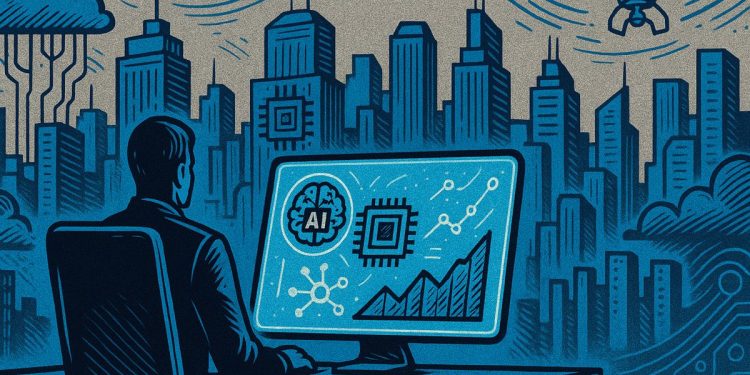McKinsey’s 2025 Technology Trends Outlook shows that big changes are coming in AI, faster computers, and new engineering ideas. Companies are told to act quickly with AI, get ready for new types of internet security, and spend more money on training their people. AI is making a huge impact, with things like smart robots, better health checks, and safer banking. Businesses need to work with others and make sure they have the right skills to keep up. The future is bright, but everyone needs to move fast and be ready for what’s next.
What are the key technology trends and executive actions outlined in McKinsey’s 2025 Technology Trends Outlook?
McKinsey’s 2025 Technology Trends Outlook highlights 13 frontier trends across AI, compute & connectivity, and cutting-edge engineering. Executives are advised to focus on rapid Gen-AI pilots, audit post-quantum encryption, and prioritize tech reskilling, dedicating 30% of budget to technology and 70% to workforce and ecosystem partnerships.
McKinsey’s 2025 Technology Trends Outlook distills 108 pages of data into 13 frontier trends that executives say will decide who wins the next decade. Below is a practical guide to what matters now, what it costs, and who is already moving.
The Three Battlegrounds
| Category | Key Technologies (2025 Focus) | Business Impact So Far |
|---|---|---|
| AI Revolution | Generative AI, agentic systems, AI-optimized chips | $2.6–4.4 trn annual value potential; 60 % of Global 2000 running ≥1 production LLM |
| Compute & Connectivity | 5G-Advanced, edge-cloud fusion, custom semiconductors | 38 % latency cut in factory robotics; AWS/ Azure edge nodes now within 50 km of 90 % US metro areas |
| Cutting-Edge Engineering | Quantum processors, post-quantum crypto, immersive reality | First commercial quantum chemistry pilot (Merck + IBM) delivered 17 % faster molecule simulation |
Money & Speed: 2025 Adoption Snapshot
- Fastest climbers: Edge AI investment doubled YoY to $22 bn, driven by manufacturing and logistics.
- Quantum laggard: Still <1 % of tech budgets, yet VC and state funds poured $4.2 bn into quantum start-ups in H1-2025.
- Talent gap: Demand for AI engineers up 68 %, supply only +21 %. Average salary premium: $42 k above cloud roles.
Supply-Chain Reality Check
Geopolitics is reshaping hardware routes.
– 47 % of advanced GPUs now shipped under new export-license schemes (Reuters, July 2025).
– Europe’s first 2 nm fab (TSMC Dresden) will come online Q3 2026, cutting lead times for EU automotive AI chips by nine weeks.
Five Use Cases Already at Scale
- Steel : Hydrogen-based DRI furnace (HYBRIT Sweden) hit 1 Mt low-carbon steel, price premium down to $38 / t.
- Retail : Edge AI shelf cameras cut out-of-stock events by 30 % for Carrefour across 1,200 stores.
- Finance : Post-quantum encryption rolled out by six G-SIBs, protecting an estimated $9 trn daily wire traffic.
- Healthcare : GPT-5 fine-tuned on radiology data achieves 94 % concordance with senior radiologists in lung-nodule triage.
- Logistics : Quantum route optimization pilot (D-Wave + DHL) saved 1.8 million km of truck travel in EU trials.
What Leaders Are Doing Next
- July 29 Virtual Briefing: McKinsey partners will walk through scaling playbooks (registration here).
- Top playbook theme: “30-70 rule” – dedicate 30 % budget to tech, 70 % to reskilling and ecosystem partners.
Quick-Start Checklist for 2025 Budgets
- Now : Run a 6-week Gen-AI pilot limited to one customer journey (support tickets, quoting, or onboarding).
- Next quarter: Audit encryption stack against NIST post-quantum standards; average remediation cost is $0.03 per customer record.
- Year-end : Secure edge presence within 20 ms latency of core users; ROI breakeven is 11 months for heavy-manufacturing clients.
Sources: McKinsey 2025 tech trends, World Economic Forum clean-energy report (Jan 2025), Clean Investment Monitor (April 2025).
What are the most critical technology trends executives should prioritize in 2025?
AI revolution dominates the agenda, with McKinsey identifying 13 frontier technologies grouped into three categories: AI revolution, compute & connectivity, and cutting-edge engineering. The report emphasizes AI integration is no longer optional – companies integrating AI with IoT, blockchain, and edge computing are seeing 15-25% productivity gains in pilot programs.
Key focus areas for 2025:
– Generative AI platforms now offer multimodal capabilities (text, image, audio) with real-time data integration
– Edge computing enables real-time decision making with 90% reduced latency for robotics and manufacturing
– Quantum technologies are transitioning from lab to early commercial applications in cryptography and drug discovery
How will these trends reshape workforce requirements by 2025?
Digital talent demand has exploded – companies report 300% increase in AI specialist positions compared to 2023. The workforce transformation involves three critical shifts:
- Skills prioritization: 78% of executives cite AI specialists, data engineers, and cybersecurity experts as top hiring priorities
- Human-machine collaboration: New models blending automation with human judgment are transforming decision-making processes
- Upskilling imperative: Organizations investing $2,400-4,800 per employee in digital literacy programs see 40% faster technology adoption rates
What are the real-world applications of energy and sustainability technologies?
Industrial sectors are leading the sustainability transformation with measurable impact:
- Solar manufacturing: U.S. domestic solar module production now matches 55% of annual capacity additions through 2035
- Battery storage: Grid-scale applications balance renewable generation, with 6.84 million EV manufacturing capacity projected by 2035
- Hydrogen energy: Industrial-scale projects demonstrate feasibility in steelmaking and ammonia production, particularly in Europe and Asia
Business impact: Companies integrating these technologies report 20-30% reduction in operational costs within 18 months of deployment.
How are geopolitical dynamics affecting technology adoption?
Global tech competition is fragmenting supply chains with significant implications:
- Trade barriers: Rising U.S.-China tensions are driving “friend-shoring” of semiconductor and quantum hardware supply chains
- Talent competition: Visa restrictions and national security concerns are reshaping global researcher flows
- IP protection: “Harvest Now, Decrypt Later” attacks have increased 400% as quantum threats to encryption emerge
Strategic response: 65% of Fortune 500 companies are developing dual sourcing strategies for critical technologies.
What practical steps should executives take to scale these technologies effectively?
McKinsey recommends a five-step approach based on successful implementations:
- Start with pilot programs: Focus on 2-3 high-impact use cases with clear ROI metrics
- Invest in talent: Dedicate 15-20% of technology budget to workforce development
- Secure supply chains: Develop dual sourcing strategies for critical components
- Establish governance: Implement robust frameworks for AI ethics and digital trust
- Monitor competitive dynamics: Track geopolitical developments and adjust strategies quarterly
Virtual event opportunity: McKinsey is hosting a virtual executive briefing on July 29 to discuss practical scaling strategies based on 2025 report findings.



















